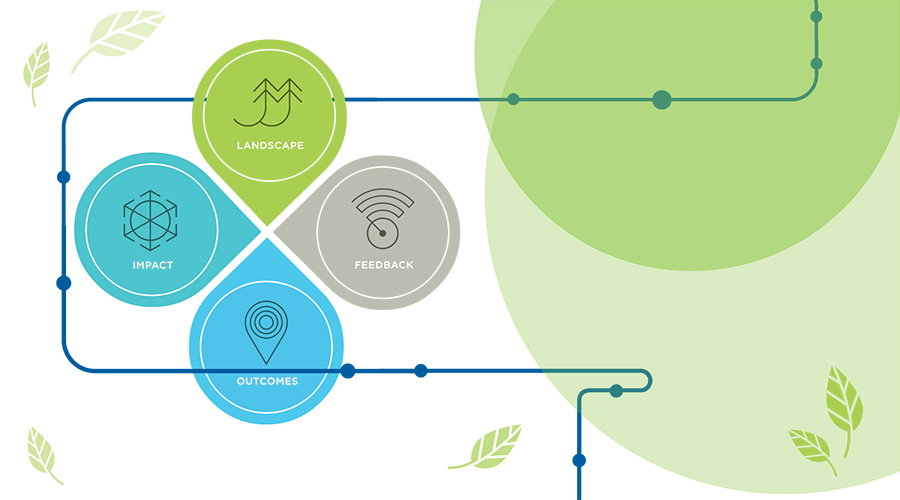Chantell Johnson, Managing Director, Evaluation, shares some of our practices for adjusting our strategies as we learn and evaluate.
Our approach to our programmatic strategies stems from a belief that there are no blueprints to how we work in the philanthropic sector. It is a belief that we can and should move forward, create, generate, and do so dynamically—simultaneously gathering input and feedback.
For us, a dynamic approach means that we do not develop static strategies that presume a fixed understanding of how to reach our goals. We do, however, hold our goals constant, while our strategies shift as we learn.
The path to our goal—our strategy, our approaches, how and who we fund—is where we live this dynamism. It is where we expect the landscape to change, where we expect to learn, and where we adjust our strategies in response to these changes and learnings.

So, as we evaluate, we seek to discover whether our strategy is producing significant results or meaningful contributions. We do this by creating continuous opportunities to ensure we have the inputs we need to understand how best to shift our strategy to further achieve our goals around justice, equity, and impact.
We rely on a variety of sources for input and feedback, including grantees, our Board, external experts, internal advisors, and evaluation and learning partners. The measures and questions we ask—focused on our programmatic goals and values of equity and inclusion—hold us accountable to our goals and help us live our principles of the Just Imperative and informed decision making. Based on our findings, we adjust.
While we believe in working dynamically, we do not believe in iterating eternally. We use periodic strategy reviews as a formal institutional moment with our Board to assess our Big Bets against our time-bound intended impacts and our Enduring Commitments, Field Support, and Awards and Special Projects against our expectations and specified outcomes.
In a strategy review, the Board formally considers the effectiveness of our program, with guidance from the program teams, to make decisions about the focus and direction of the strategy—whether to pivot, exit, or deepen a commitment. One element of the review is the formal evaluations, alongside input from grantees and experts in their fields. We design these reviews to interrogate our theory of change, assumptions, progress, and the outcomes and impact toward our expectations and intent.
We hope this contained dynamism makes our work more effective and responsive in the long run, representing the needs in a field and the perspectives of our grantees and those most affected by our funding.
More Perspectives on Evaluation ›


